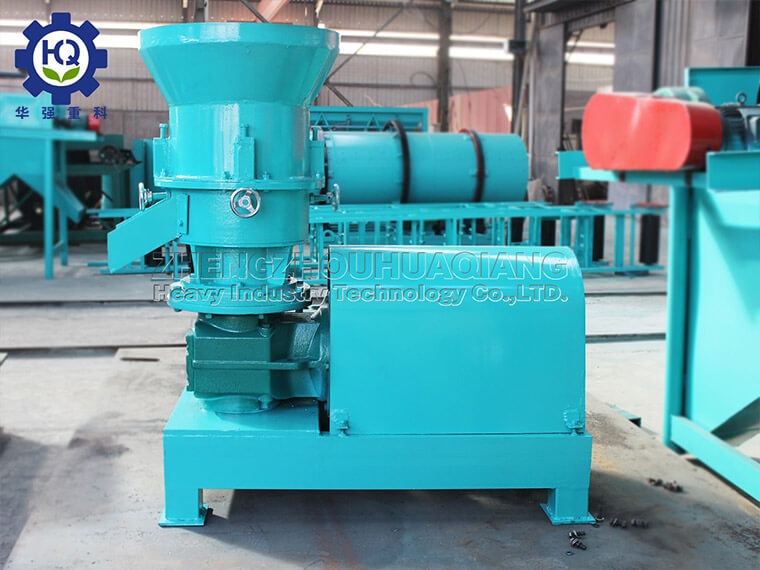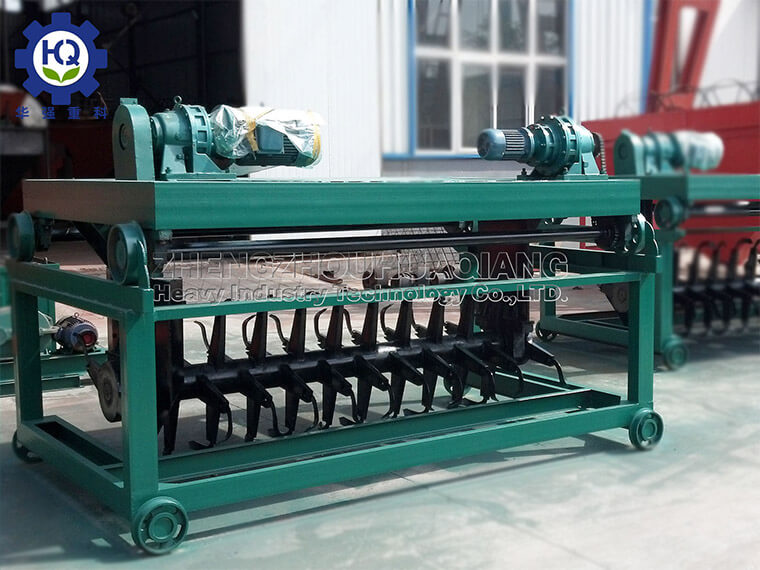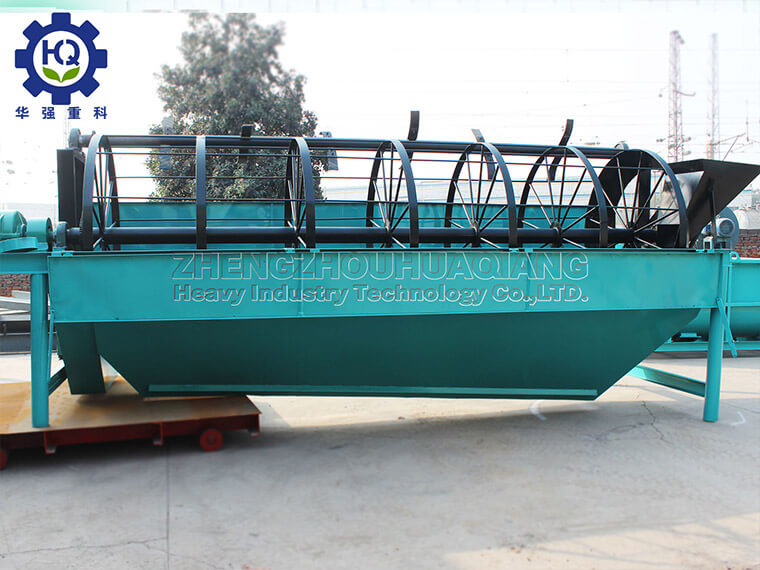The organic fertilizer chain plate fermentation turning machine is an important equipment widely used in the aerobic fermentation process of organic waste. Its unique design can effectively promote the decomposition and transformation of organic matter, forming high-quality organic fertilizers. The following are several significant characteristics of the chain plate fermentation turning machine in the organic fertilizer fermentation process:
1. Efficient and uniform flipping and throwing
The chain plate fermentation turning machine is equipped with a sturdy chain plate and blade structure, which can deeply move and flip materials in the fermentation tank, achieve comprehensive and uniform air circulation, promote microbial activity, and accelerate the degradation rate of organic matter.
2. Large capacity processing
This machine is suitable for large-scale organic waste treatment projects, with a large single processing capacity, and is suitable for the centralized processing needs of large amounts of organic waste in farms, ranches, and other areas.
3. Automated control
Most chain plate fermentation turning machines have advanced control systems that can set turning cycles, temperature monitoring, and other functions, achieving intelligent management of the fermentation process, greatly reducing labor costs, and improving fermentation efficiency.
4. Strong adaptability
This type of equipment can operate in various environments, whether it is an indoor fermentation workshop or an outdoor fermentation field, and can maintain good performance without being limited by weather conditions.
5. Easy maintenance
The structural design of the chain plate fermentation turning machine takes into account the durability and ease of maintenance for long-term use. Most components are easy to disassemble and clean, reducing maintenance difficulty and costs.
6. Environmental protection and energy conservation
The high temperature generated during the fermentation process can self disinfect and sterilize, reducing the risk of pathogens and pests; In addition, the equipment has relatively low energy consumption during operation, which is in line with the concepts of green production and energy conservation and emission reduction.
The chain plate fermentation turning machine, with its unique turning method and efficient fermentation effect, has been widely used in the organic fertilizer industry, playing a positive role in improving the level of organic waste resource utilization and promoting sustainable agricultural development.








